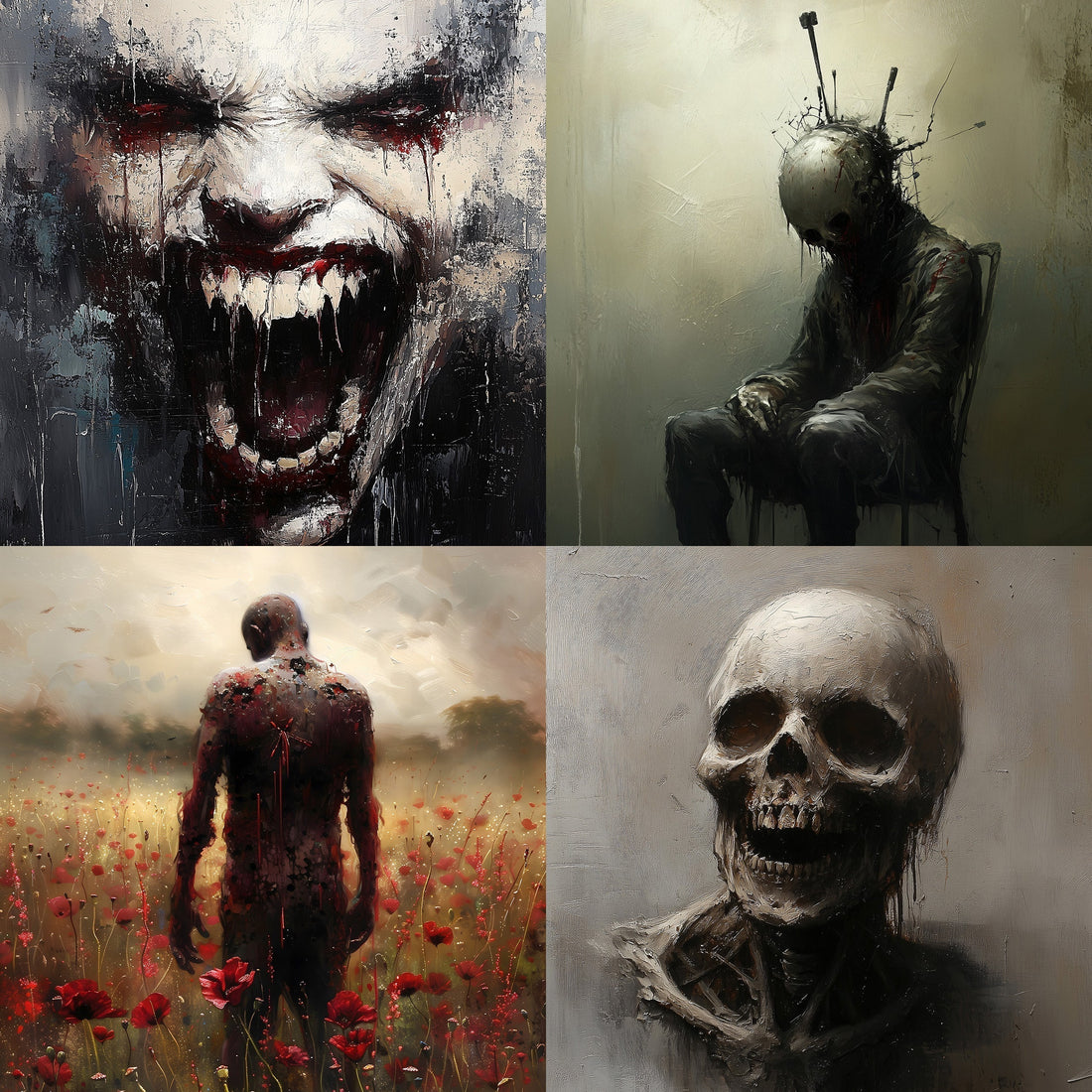
Horror Paintings: A Journey Through Art's Darkest Corners
ChristianShare
Horror paintings represent one of art's most compelling genres, exploring the shadow side of human existence. These works dive deep into themes of fear, death, and the macabre, forcing viewers to face their own anxieties and mortality. From unsettling landscapes to disturbing figures, these artworks stir powerful emotions and challenge us to think about life's most profound questions.
Historical Significance and Cultural Impact
Throughout history, horror has served as a mirror for society's deepest fears and cultural anxieties. Artists have used their canvases to express the complexities of the human experience, drawing inspiration from:
- Mythology and ancient folklore
- Religious themes and spiritual struggles
- Personal trauma and psychological conflict
- Social upheaval and cultural transformation
This genre provides a unique window into what it means to be human, making it an essential part of art history.
Evolution Through the Ages
Renaissance and the Birth of Dark Themes
During the Renaissance, a significant shift occurred in artistic expression. Artists began breaking away from strict religious constraints that had dominated their work for centuries. This newfound freedom opened doors to explore darker themes:
- Artists started depicting scenes showcasing life's struggles, death, and the human condition
- Works combined beauty with elements of fear, creating captivating tension
- Religious and moral themes were presented through disturbing imagery
19th Century Romanticism
The Romantic era brought a new wave of horror in art. Artists embraced horror as emotional expression, reflecting societal fears and anxieties:
- Themes of madness, death, and the supernatural became prominent
- Gothic undertones solidified horror as a legitimate artistic subject
- Artists used shock value to force audiences to confront uncomfortable truths
Modern Interpretations
Contemporary artists continue using horror as a powerful theme, expanding beyond traditional painting:
- Digital art and mixed media create immersive experiences
- Technology enables innovative techniques for conveying fear
- Horror adapts to changing cultural landscapes while remaining relevant
Influential Artists and Their Masterworks
Hans Memling
Known for "Triptych of Earthly Vanity and Divine Salvation", Memling combined biblical allegories with horrifying images of death. His work serves as a moral reminder about the consequences of earthly desires, masterfully intertwining beauty with horror.
Hieronymus Bosch
"The Garden of Earthly Delights" showcases surreal, hallucinatory scenes reflecting human life and morality. This triptych presents paradise, earthly pleasures, and hell, encouraging viewers to contemplate their actions' consequences. Bosch's imaginative and grotesque imagery continues to intrigue audiences today.
Francisco Goya
Renowned for "Saturn Devouring His Son", Goya created one of art's most disturbing images. This painting symbolizes generational conflict and societal fears, forcing viewers to confront the darker sides of human nature. His work reflects the turmoil of his era while remaining deeply relevant.
Salvador Dalí
"The Face of War" depicts trauma and destruction through surrealist techniques. The painting represents psychological horror of conflict, featuring a giant skull and distorted faces that evoke profound dread and serve as commentary on war's impact on the human psyche.
Francis Bacon
The "Screaming Pope" series captures violence and trauma's haunting nature. Bacon's distorted figures and intense colors create chaos and despair, serving as powerful commentary on the human condition and modern anxieties.
Common Themes in Horror Art
Death and Mortality
Death remains the most prominent theme in horror paintings:
- Serves as a reminder that life is fragile and fleeting
- Depicts skeletons, graveyards, and dying figures
- Creates chilling atmospheres that compel reflection on existence
- Forces viewers to confront the inevitability of mortality
Psychological Horror
Artists explore the darker corners of the human mind:
- Depicts fear, madness, and emotional turmoil
- Challenges understanding of reality and perception
- Portrays characters in distress or anxiety-provoking situations
- Reflects internal struggles and mental anguish
Supernatural Elements
Ghosts, monsters, and otherworldly beings add layers of fear:
- Challenge understanding of reality and possibility
- Create wonder and dread simultaneously
- Push boundaries of what viewers consider real
- Enhance horror through unknown and unexplained phenomena
Impact on Modern Culture
Horror in Popular Culture
Horror painting themes have permeated various media forms:
- Films like "The Shining" and "Pan's Labyrinth" draw from horror art's visual language
- Literature embraces these themes, with authors referencing horror art's emotional weight
- Video games incorporate similar imagery to evoke fear and fascination
- This crossover creates a rich tapestry of horror across entertainment
Art Market and Collecting
Interest in horror art continues growing in the contemporary market:
- Collectors are increasingly drawn to horror-themed artworks' unique nature
- Online platforms provide spaces for artists to reach wider audiences
- Online shopping convenience contributes to horror art's growing popularity
Incorporating Horror Art into Home Decor
Choosing the Right Pieces
When selecting horror paintings for your home:
- Consider your personal style and home's overall aesthetic
- Decide between classic horror themes or modern interpretations
- Think about colors and moods that complement your space
- Consider artwork size in relation to room dimensions
- Choose pieces that enhance rather than clash with existing decor
Effective Display Techniques
Proper placement and lighting enhance horror art's impact:
- Use soft, dim lighting to create moody atmospheres
- Employ spotlights or wall sconces to highlight specific pieces
- Hang paintings at eye level as a general rule
- Experiment with different heights and arrangements
- Create gallery walls mixing various sizes and styles
Contemporary Relevance
Horror paintings remain more than just art - they're a vital part of our cultural landscape. These works:
- Challenge us to explore life's complexities and human experience
- Serve as reflections of historical and contemporary fears
- Influence entertainment, literature, and popular culture
- Provide safe spaces to engage with our deepest anxieties
- Transform living spaces into captivating, personality-rich environments
The enduring power of horror art lies in its ability to evoke emotion, provoke thought, and connect us to deeper truths about existence. From Renaissance masters to contemporary artists, this genre continues challenging viewers to confront their fears while appreciating the beauty found in darkness.
Whether you're an art collector, enthusiast, or someone drawn to the macabre, horror paintings offer something profound. They remind us that confronting our fears through art can be both cathartic and enlightening, ensuring this genre's continued relevance in our cultural conversation.












